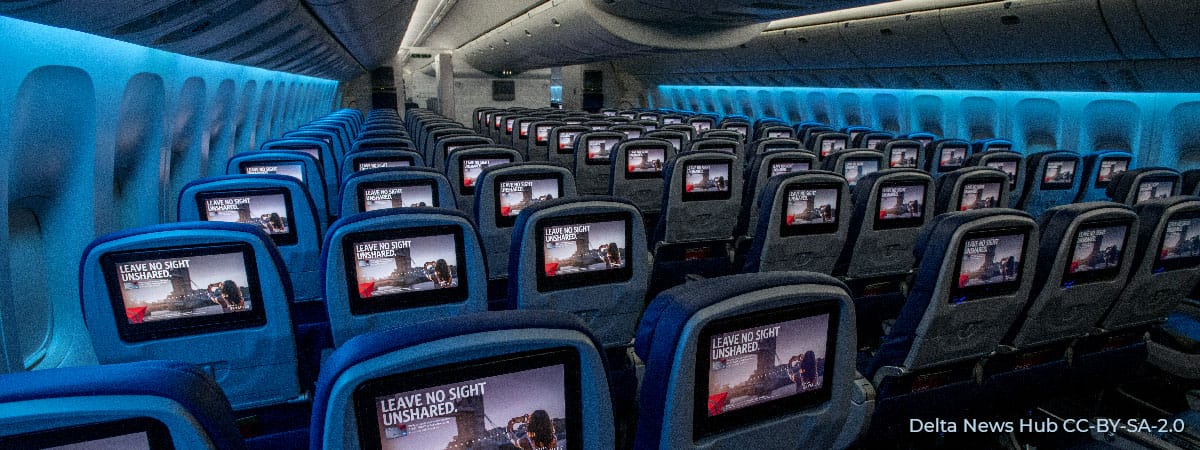In the information age, the Internet’s influence on our lives is undeniable. From communication to entertainment and the workplace, the global network has woven a densely interconnected web that reaches and provides all kinds of services to every corner of the planet. However, few people have ventured to find out the costs of maintaining all these connections, and we rarely think about the environmental impact of this digital revolution. And let there be no doubt that as the Internet industry continues to expand, its ecological footprint is also growing.
Until recently there were certain fields, such as aviation, which remained outside of these considerations. But the truth is that the digital revolution is also playing a leading role in certain aspects of aviation and air transport.
Internet use has an impact that, in the case of aviation, is far outweighed by the benefits it brings.
So, let’s explore how the conjunction of the Internet and aviation is moulding many aspects of our society. We will take a balanced view that considers the challenges as well as the opportunities that this convergence brings.
Nine years ago, the Internet industry accounted for around 2% of global CO2 emissions, a number that had risen to a worrying 3.7% by early 2020. These figures, while surprising, only begin to scratch the surface of the complex relationship between technology and the environment. From sending emails to making video calls to streaming content, each click on the Internet has an environmental impact that often goes unnoticed.
Let’s look at an example: the simple act of sending 1,700 emails a year emits approximately 17 kilograms of CO2. This explains why email servers and the data centres that host them consume large amounts of electrical power, as do the routers, hubs, encoders, etc. needed for the data to reach the end user. Much of this energy comes from non-renewable sources such as oil, coal or natural gas.
To translate this in air transport terms, sending those 1,700 emails is equivalent to 5% of the emissions of a flight from Madrid to Vienna (1).
But how does aviation fit into this perspective on emissions? To understand it, we must look beyond the skies and inside the airports and aeroplanes connected to the Internet.
Over the last decade, we have seen a significant increase in the availability of in-flight Wi-Fi.
Today, a wide range of airlines offer Internet access during their flights, allowing passengers to stay connected even several thousand metres above the ground. This advance has not only transformed passengers’ flight experience but also revolutionised the way airlines operate.
From real-time fleet monitoring to instant communication with crew, Internet connectivity has become an essential tool in the world of aviation. Nevertheless, in the same vein mentioned earlier, this also poses important questions about the infrastructure required to keep an entire fleet of aeroplanes online… and the energy cost.
The infrastructure behind in-flight Internet access is complex and multifaceted. It involves a network of satellites, ground antennas and onboard equipment that work together to provide a seamless and reliable connection.
Each Wi-Fi-enabled flight is supported by an intricate network of technology that spans the entire globe. This technology comes at a cost. The construction, maintenance and service provisioning of this infrastructure has an environmental impact that cannot be overlooked. However, it is also important to consider the positive effect that interconnectivity has on the efficiency of aircraft operation. We must not lose sight of the fact that a proper environmental impact assessment includes both positive and negative aspects. A balance must be struck between the two.
In-flight Internet connectivity not only improves the passenger experience but also contributes to the efficiency and safety of air transport. It allows for real-time monitoring of operations, which can lead to better fuel management, early detection of problems, more effective route planning and faster responses to unexpected situations.
Furthermore, providing passengers with real-time information about flight incidents, delays, connections and alternatives reduces the need for unnecessary travel and optimises the use of resources. In this regard, having Internet access before boarding as well as on the plane can be considered a tool that helps improve the passenger experience. This should be seen as a positive impact.
The convergence of the Internet and aviation provides fertile ground for innovation but also poses significant environmental challenges. As discussed above, to confront these challenges it is essential to consider the cost as well as the benefit of this convergence, both globally and specifically.
By taking steps to minimise the impact we have as Internet users, such as reducing video resolution or turning our camera off during online meetings, we can help reduce our own environmental footprint. But at the same time, we must recognise the fundamental role that connectivity plays in the development of both individuals and collectives. Aviation must take the same path as other sectors impacted by the Internet. Above all, if we take into account the benefits it brings to both passengers and operators.
Ultimately, finding a balance between technological advancement and environmental responsibility is the key to a better future.



